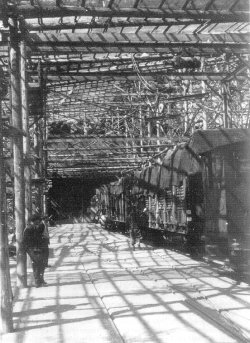
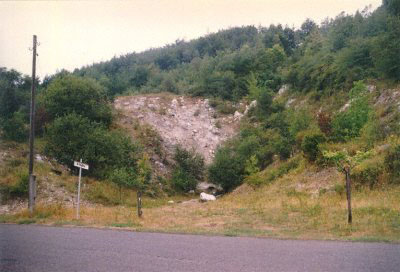
Mittelwerk GmbH was the name of a company that operated in a place called Salza/Thüringen. Salza/Thüringen was near the town of Nordhausen on the foot of Kohnstein massive. The company was responsible for the production of the A4 rocket. The A4 rocket was better known as the V2 rocket.
In 1917 the Badische Analin und Soda Fabriken (BASF) started to get Anhydrite from the Kohnstein massive for the production of Ammoniac. An important raw material for the production of explosives. The winning of Anhydrite left a number of tunnels in the Kohnstein.
In 1934 these tunnels were bought by the Wirtschaft Forschungs Gesellschaft mbH (WiFo). There purpose was to store strategic important raw materials in the tunnels. They called this installation "Ni", probably named after the nearby village of Niedersachsenwerfen.
In 1935 was decided to enlarge the system in the Kohnstein massive. They started to build two parallel tunnel (Stollen "A" and "B"). These two parallel tunnels were mutual liked up by transverse tunnels (Querstollen or Kammers). See map. There were about 50 of those Kammers. The project got the codename "Ni 109". The building started in June 1936.
 |
 |
|
| The entrance to the "A" tunnel in 1945. | The blown up entrance to the "A" tunnel in 1990. |
 |
Map of
the Ni complex in the Kohnstein massive. The two parallel tunnels A and B (marked with red squares) go through the Kohnstein massive. The transverse tunnels (Querstollen or Kammers) are marked with blue squares. There were 50 of these tunnels. In these tunnels, the actual production took place. The yellow square marks the location of the B12 project. The part marked in purple are the Kammers 21 - 41. It was used by the Mittelwerk GmbH to produce V2 rockets. The upper part of the system (Kammers 1 - 20) was used by the Nordwerk GmbH to produce aircraft engines for the Junkers Flugzeugmotoren company.. The cyan colored circle marks the part of the tunnels that is currently open for the public. The orange circle marks the part of the system that was used for the production of the V1 projectile. |
In Augusts 1943, the total available productionsurface was 120000 m2.
A special committee ("Sonderauschuss A4") decided to decentralize the production of the A4 rocket. It was planned to be produced in Friedrichshafen (Zeppelin Werke), Wiener-Neustadt (Rax Werke) and in the Ni 109 complex. A total of 2000 rockets per month should be produced.
In the middle of august almost all planned production sites (Wiener Neustadt, Friedrichhafen and Peenemünde) were bombed by the Allies. At the end of August 1943 Germans decided to produce the A4 rocket only in the Ni 109 complex . The SS was made responsible for building the production facilities. The actual work was carried out by prisoners from the concentrationcamp Buchenwald. For that purpose, a special camp was set up to house the prisoners. This camp was called "Lager Dora". Dr.-Ing. SS-Brigadeführer Hans Kammler had the overall management of the building activities.
For the actual building of the rockets, a special company was established to coordinate the production of the rockets. This company, called "Mittelwerk GmbH", started their activities in november 1943.
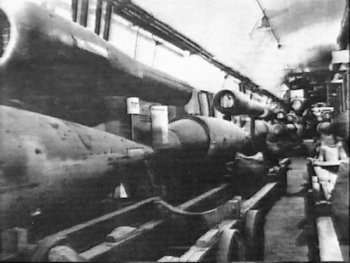 |
Production of the V1 projectile in the Ni 109 complex |
On the 11th of April 1945 the complex was occupied by American forces. Large amounts of captured materials were transported to America. Not just materials, but valuable rocket scientists as well.
The American forced retreated on 01-06-45. The Russians took their place. From that date to the summer of 1948, the Russian took all valuable material left to Russia.
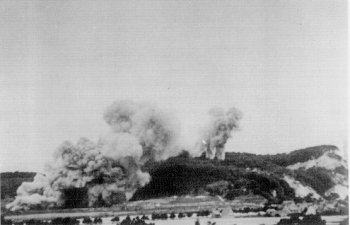 |
Because of the Potsdammer agreement, the
Russians try to blow up the Ni 109 tunnels. In spite of
the attempts, they only succeeded to blow the entrances. The blowing up of the Ni 109 tunnels by the Russian army. |
In the years between 1950 and 1970, the Kohnstein massive is dug away for gaining Anhydrite. On 26-05-91 the former complex is put under Denkmalschutz (marked as an historic site). The former complex became part of the Dora Memorial (Gedenkstätte Mittelwerk). Funds were raised to make it possible to open the Ni 109 tunnels for the public. They succeed and on the 50 anniversary of the liberation of the camp, the tunnels were opened for public.
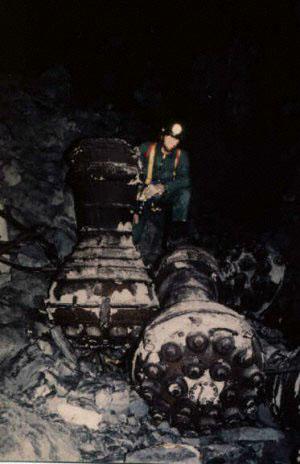 |
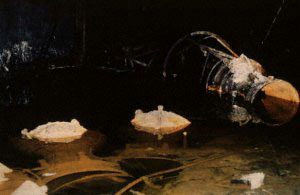 Shortly after reunifacation of both Germanys in the early ninetys, a group of people entered the Ni 109 complex through old air ventilation shafts. It was amazing what kind of material there were still out there. On the photo's above and left you see the piles of combustion chambers of V2 rockets. Accessing the complex illegal is fairly impossible now these days, all ventilatons shafts and other "secret" entrances are wired with alarms and under constant police surveillance. Also, it isn't necessary anymore to enter the complex illegally, because you can get guided tours in the system. Photo's date from the early nineties. |
Some more pictures, taken in 1993.
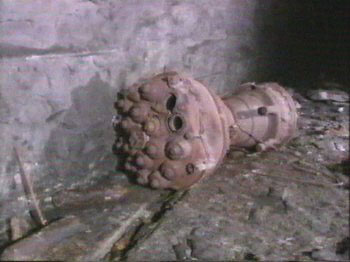 |
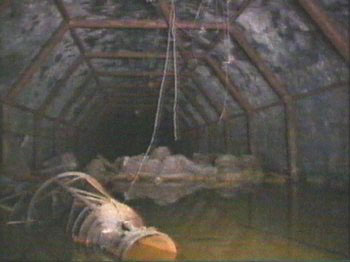 |
| Combustion chamber of V2 rockets. | Combustion chamber of V2 rockets in the water. |
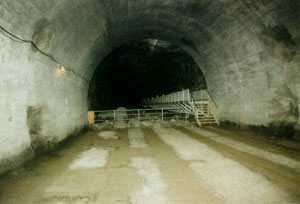 |
Tunnel "A" (1996) The tunnel is wide enough for two trains to drive rhrough the tunnel. |
|
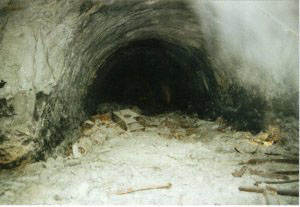 |
Kammer 50 (1996) | |
| Back to the: | Home page | Camps Section | War Industry Section | Complexes Section | Museum & Monument Section |